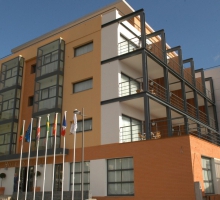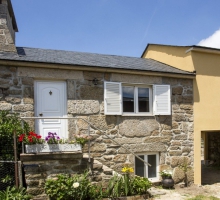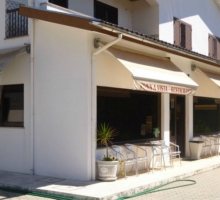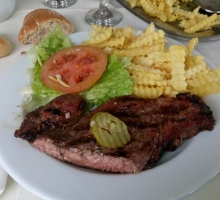The tungsten and tin exploration in the zone of the Rio de Frades mines is dated back to at least 1921-22, when the first licenses to the mining exploration for this area were granted. The W-Sn field of Rio de Frades is placed along a fault system, with the N-S approximate direction, occurring on early Ordovician metasedimentary rocks and at west of the Regoufe plutonite. The metasomatic effects caused by the proximity of an apophysis in the Regoufe granite in the edge of the contact aureole with the mentioned metasediments were the responsible for the quartz veins’ mineralization, that are rich in wolframite (the most abundant), cassiterite and, more exceptionally, scheelite. The arsenopyrite is the main sulfide identified, occurring others like pyrite, sphalerite, marcasite, pyrrhotite, stannite and native bismuth.
In 1923, the Companhia Mineira do Norte de Portugal was founded. As it worked with German captains, it was also known as “Companhia Alemã” (German company), and it was dedicated to the exportation of tungsten to Germany. In 1941 occurred the period of the biggest activity of exploration and exportation of tungsten to Germany. According to some estimates, there were more than 3000 people working in this field. Being the mining company with a bigger number of concessions and, consequently, a bigger territorial area, the “Companhia Alemã” realized most of the investments and improvements of the region, such as an electric transformer substation, a compressor central with very powerful electric compressors, and even a temporary station for the GNR (National Republican Guard). There was also an improvement of the social conditions of the facilities, both for the managerial staff and the workers, namely in the construction of more and better houses, an infirmary, a medical office, a canteen, a barbershop and a shower room, with compartments for men and women, as well as sanitation works.
The ruins of the Frades mining exploration and facilities are spread among three main cores: a) the traditional village with schist houses, b) the “Bairro de Cima”, a set of old residences of the technical and administrative staff of the mines, some of them still occupied by their family; and c) main core of the mines work area, located in the valley bottom, constituted by the office building, infirmary and medical office, laundry, settling tanks, garages and other technical facilities, as well as the Santa Bárbara chapel. In the slopes of the mining pole, it is also possible to observe the remains of old houses of miners and warehouses, as well as several galleries, with particular reference to the gallery of the Cerdeira valley that, according to some historical data and people’s memories, was the most productive in terms of tungsten when compared to all of the mining concessions of Rio de Frades. Nowadays, it can be crossed through a trail of about 200 m, bringing memories of the past mining stories. After crossing this gallery, we can see a beautiful waterfall in the tributary stream of the Frades river, as the result of a dike built to carry water to a superior spot through the gallery to the mining complex. Rio de Frades is also the best river for practicing canyoning on the Arouca Geopark territory.
Location: Arouca
In 1923, the Companhia Mineira do Norte de Portugal was founded. As it worked with German captains, it was also known as “Companhia Alemã” (German company), and it was dedicated to the exportation of tungsten to Germany. In 1941 occurred the period of the biggest activity of exploration and exportation of tungsten to Germany. According to some estimates, there were more than 3000 people working in this field. Being the mining company with a bigger number of concessions and, consequently, a bigger territorial area, the “Companhia Alemã” realized most of the investments and improvements of the region, such as an electric transformer substation, a compressor central with very powerful electric compressors, and even a temporary station for the GNR (National Republican Guard). There was also an improvement of the social conditions of the facilities, both for the managerial staff and the workers, namely in the construction of more and better houses, an infirmary, a medical office, a canteen, a barbershop and a shower room, with compartments for men and women, as well as sanitation works.
The ruins of the Frades mining exploration and facilities are spread among three main cores: a) the traditional village with schist houses, b) the “Bairro de Cima”, a set of old residences of the technical and administrative staff of the mines, some of them still occupied by their family; and c) main core of the mines work area, located in the valley bottom, constituted by the office building, infirmary and medical office, laundry, settling tanks, garages and other technical facilities, as well as the Santa Bárbara chapel. In the slopes of the mining pole, it is also possible to observe the remains of old houses of miners and warehouses, as well as several galleries, with particular reference to the gallery of the Cerdeira valley that, according to some historical data and people’s memories, was the most productive in terms of tungsten when compared to all of the mining concessions of Rio de Frades. Nowadays, it can be crossed through a trail of about 200 m, bringing memories of the past mining stories. After crossing this gallery, we can see a beautiful waterfall in the tributary stream of the Frades river, as the result of a dike built to carry water to a superior spot through the gallery to the mining complex. Rio de Frades is also the best river for practicing canyoning on the Arouca Geopark territory.
Location: Arouca





